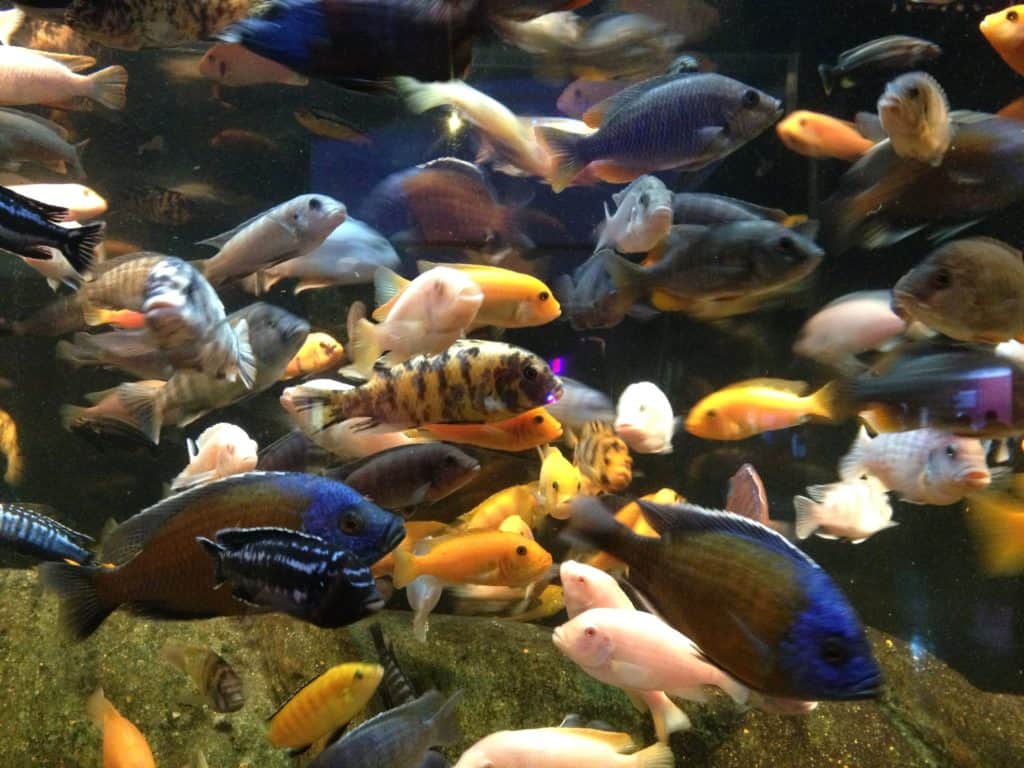The practice of adding salt to a freshwater aquarium is one that has been around for quite some time. There are several reasons why sodium chloride (aka table salt or aquarium salt) would be added to a freshwater tank, including stress reduction, medication, and to create a natural environment for fish normally found in brackish water. Before you add salt to your freshwater aquarium for any reason, be sure to understand the reasons for doing so and any possible side effects.
Many popular aquarium fish species come from brackish areas, such as rivers feeding into an ocean. In these cases, adding salt to the aquarium serves to replicate their natural habitat by creating a water quality that is between the typical freshwater and saltwater tank options. Known as “brackish,” attaining the optimum salt content for these types of fish requires knowledge of your fish species’ natural environment, as the salt requirements can vary widely even among brackish fish.
 Many species of fish are not brackish, but still benefit from a small quantity of salt in their water. Salt can reduce stress in goldfish, African Cichlids, and most live-bearers such as Mollys, Platys, Guppies, and Swordtails. When using salt to reduce stress, the recommended dose is one to two tablespoons for ten gallons of water. This use of aquarium salt in a freshwater aquarium is especially common with fish that have lost a lot of scales. A teaspoon per 10 gallons of water will support the healing of scales by helping the fish maintain the proper level of salt in its blood.
Many species of fish are not brackish, but still benefit from a small quantity of salt in their water. Salt can reduce stress in goldfish, African Cichlids, and most live-bearers such as Mollys, Platys, Guppies, and Swordtails. When using salt to reduce stress, the recommended dose is one to two tablespoons for ten gallons of water. This use of aquarium salt in a freshwater aquarium is especially common with fish that have lost a lot of scales. A teaspoon per 10 gallons of water will support the healing of scales by helping the fish maintain the proper level of salt in its blood.
In addition to this use, salt may be added to treat common ailments of freshwater aquarium fish, including ecoparasites, ich, and Costia. To kill these ailments, you’d need to add about 1 1/2 cups of salt for every 10 gallons of aquarium water. If you have an aquarium hydrometer, which measures the salt content, it should read between 1.005 and 1.009, or 7 to 19 parts per million. This salt level must be maintained for several weeks. Not all species can tolerate this much salt. Whenever treating freshwater fish with salt, you must monitor the fish closely for signs of stress, and return the fish to a fully freshwater environment if necessary.
A short-term dip in lightly salted water is often recommended as a treatment for fish that have been exposed to water with a high level of nitrites. Add about four teaspoons of salt to a gallon of water, and place your fish in the bucket for about half an hour, observing them closely for signs of distress during this time.
When should you avoid adding salt to an aquarium?
If your tank is planted with live plants, avoid salt, because plants are easily damaged by relatively low salt levels. Scaleless fish are very sensitive to salt, as are some other fish species, including Tetras.
If you do decide to add salt to your aquarium, avoid using ordinary table salt, which contains additives such as iodine and calcium silicate. Aquarium salt has no such additives, making it safer for your fish. A good idea is to create a checklist on your calendar of the important duties that need to be completed.
API AQUARIUM SALT Freshwater Aquarium Salt 453-Gram Box
Features:- Contains one (1) API AQUARIUM SALT Freshwater Aquarium Salt 453-Gram Box
- Promotes fish health and disease recovery with increased electrolytes
- Improves respiration for fish in freshwater aquariums
- Made from evaporated sea water for all-natural results
- Use when changing water, when setting up a new freshwater aquarium and when treating fish disease


Related Posts
A Deeper Look In To Loach Fish Species
Everything You Need To Know About Using T5 Lights For Your Aquarium
From Cambrian to Current: A Fish Evolution Story